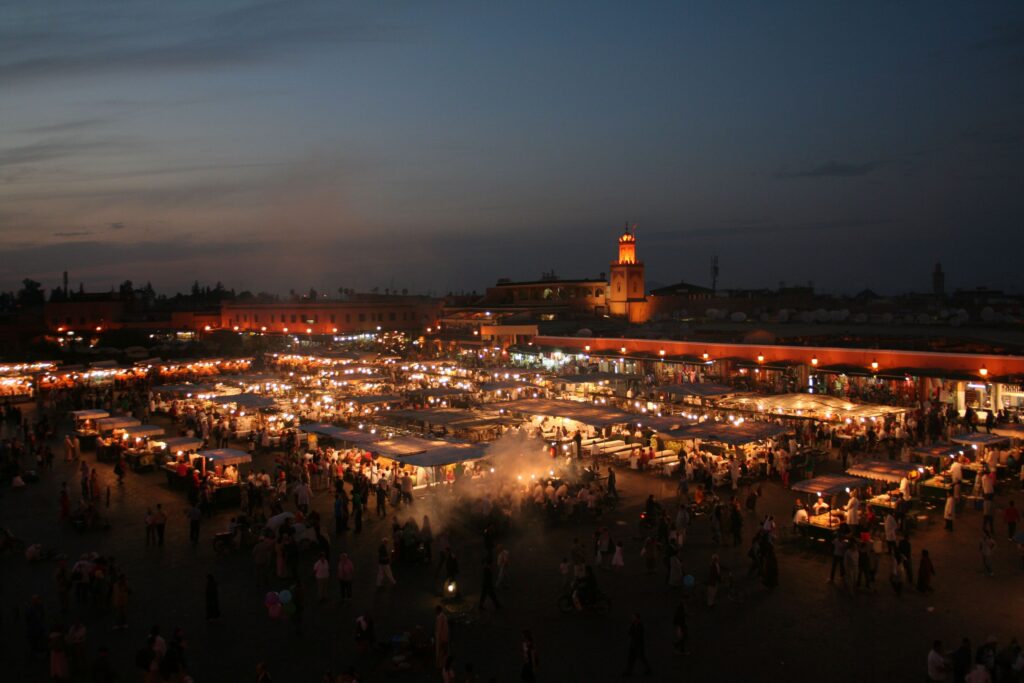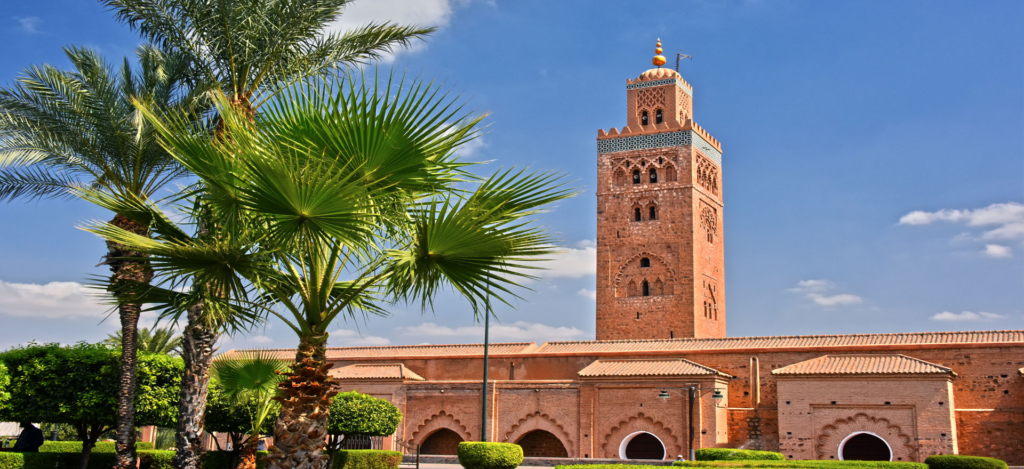Jemaa el Fna is Marrakech’s beating heart and a vibrant snapshot of Morocco’s rich cultural tapestry. From dawn till well past midnight, this iconic square pulses with life, storytelling, music, culinary adventures, and centuries-old traditions that captivate visitors from across the globe. Whether you’re a curious traveler, a history buff, or a foodie on the hunt for bold new flavors, Jemaa el-Fna is an absolute must-visit destination.

This guide will walk you through Jemaa el-Fna’s fascinating history, enchanting activities, and unique cultural significance while offering tips to make the most of your visit.
The History of Jemaa el Fna
Jemaa el Fna, located in the heart of Marrakech’s medina, is more than just a vibrant marketplace—it’s a living piece of history. Dating back to the 11th century, this square has evolved over the centuries while retaining its unique identity as a gathering place for commerce and culture.
The name “Jemaa el-Fna” loosely translates to “assembly of the dead,” with some historians suggesting it references ancient executions once held here. Over time, the square became a hub where merchants, entertainers, and locals converged to trade stories, goods, and ideas.
What sets Jemaa el-Fna apart is its UNESCO status as a Masterpiece of Oral and Intangible Heritage of Humanity. This recognition highlights the square’s role in preserving traditional storytelling, music, and performance art—making it a treasure trove of Moroccan heritage.

What to Do in Jemaa el Fna
Jemaa el Fna’s thrilling energy comes alive through a range of sensory-rich activities. Here’s what you can’t miss when visiting the square:
1. Be Captivated by Storytellers
Moroccan storytelling, or hikayat, is a centuries-old tradition that thrives in Jemaa el Fna. Gather around a storyteller as they weave captivating tales of love, tragedy, and heroism, often punctuated with dramatic gestures and rhythmic chanting. Even if you don’t understand Arabic, the passion and theatrics are enchanting.
2. Indulge in Food-Stall Delights
Jemaa el-Fna transforms into an open-air food court as the sun sets. Dozens of food stalls offer everything from steaming bowls of harira (a Moroccan soup) to skewers of sizzling kebabs, fresh seafood, and fragrant tajines. Don’t miss out on trying snail soup or freshly squeezed orange juice, staples of the square’s culinary landscape.
3. Encounter Snake Charmers and Henna Artists
The snake charmers of Jemaa el-Fna are perhaps its most iconic sight. While mesmerizing to watch, it’s important to approach them responsibly—many of these interactions involve unethical treatment of animals, so consider choosing experiences that don’t promote harm. For a lighter, more interactive activity, visit one of the henna artists offering intricate designs using natural henna paste.
4. Experience Acrobats and Musicians
Acrobatic troupes and traditional musicians keep the square buzzing with energy. Marvel at the feats of balance and agility displayed by the acrobats or immerse yourself in the vibrant sounds of drums, stringed instruments, and flutes played by local musicians.
5. Catch Sunrise Over the Square
For an entirely different perspective, visit Jemaa el-Fna at sunrise. The usually chaotic space is transformed into a tranquil scene, perfect for leisurely exploration before the daily crowds arrive.

A Cultural Epicenter of Marrakech
Jemaa el-Fna is more than a tourist attraction; it’s a cultural pillar of Marrakech and Morocco as a whole. It serves as a melting pot for diverse traditions, languages, and communities. Locals and travelers alike gather here to celebrate Moroccan life—from its cuisine to its music to its storytelling traditions.
The square fosters connections and offers visitors a glimpse into the way Marrakech’s residents balance modernity with tradition. This cultural richness has made it a source of pride for Marrakech’s vibrant and dynamic identity.
Tips to Make the Most of Jemaa el-Fna
The square can be overwhelming for first-timers. Keep these tips in mind to ensure a memorable visit to Jemaa el-Fna Square.
1. Visit During Off-Peak Hours
Overcrowding can be intense, especially in the evening when the square is most vibrant. To avoid the largest crowds, consider visiting early in the morning or during weekdays.
2. Be Mindful of Scams
Scammers do operate in Jemaa el-Fna. Negotiate prices in advance for photos with performers or any services like henna art. Stick to well-reviewed food stalls and keep an eye on your belongings.
3. Learn Basic Arabic Phrases
A simple “Shukran” (thank you) can go a long way in building rapport. Try learning a few basic expressions to make interactions with locals more meaningful.
4. Prepare for Sensory Overload
The sights, sounds, smells, and crowds can be intense. If you feel overwhelmed, take a break in one of the nearby rooftop cafes that offer panoramic views of the square.
5. Choose Ethical Experiences
Avoid supporting activities where animals are mistreated, like snake charming or photo ops with monkeys. Instead, focus on cultural experiences that don’t exploit wildlife.
6. Venturing Beyond the Square
Jemaa el-Fna is the gateway to Marrakech’s medina. Take time to explore the winding alleys and vibrant souks surrounding the square with a local guide to fully immerse yourself in the rich history and culture of the city.

Your Next Stop in Marrakech Awaits
Jemaa el Fna is much more than just a square; it’s an experience that encapsulates the soul of Marrakech. Whether you’re savoring a traditional dish, marveling at a storyteller’s craft, or simply soaking in the atmosphere, you’ll leave with memories that will last a lifetime.
Now that you know what to expect, it’s time to plan your adventure to this unforgettable destination. For a deeper, hands-on cultural experience, consider booking a traditional Moroccan cooking class or attending a live Gnawa music performance.
By JobHijra


2 Comments